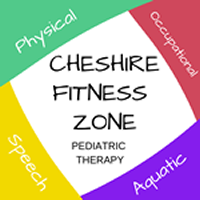With the increasing number or strokes experienced each year, there are many individuals suffering from the effects of the disease. Millions of people are living with the after effects of a stroke, many experiencing from moderate to severe impairments that usually require special care. According to experts, exercise can be very valuable as rehabilitation for patients who have had a stroke. For most survivors, hydrotherapy is very helpful. Aquatic therapy in CT can help even the weakest individuals, making it very effective for most stroke cases. Water exercises can help to improve strength and mobility.
About aquatic therapy
Hydrotherapy or aquatic therapy is basically the use of water to provide therapy or treatment. The exercises are based in water or they use water as the main form of treatment. Water therapy has been around for centuries, and it has been used for treating pains, aches and other medical issues. The exercises can range from water compresses or saunas to pool exercises. When treating stroke survivors, it is often necessary to use partial or full immersion in the water. The exercises can be performed in a pool or water-filled tub depending on the specific situation.
General health benefits
Aquatic therapy can help to improve strength, circulation, flexibility and lung capacity. As most of the body is immersed in the water, it takes the stress off the joints, which is particularly helpful when working with weak stroke patients. The water provides more resistance than when exercising on land and it helps to disperse the body heat, which will avoid overheating. Stroke patients who are wheelchair bound or who use braces or crutches, find that they do not need the mobility aids while in the pool. This makes it easy for them to perform actions or movements that they cannot do out of the water.
Cardiovascular fitness
Research has shown that stroke patients that have mild to moderate motor issues experience significant improvements after aquatic therapy. A good water-based therapy program helps to improve control, increase muscle strength and improve walking speed. This means that survivors are able to reclaim their life by performing activities that they did before the stroke. Cardiovascular fitness is important for an overall improvement of the entire life of the individual.
Improving balance
Stroke patients will often experience problems when it comes to balance. This makes it difficult to walk or perform different activities. Studies show that most chronic stroke patients received significant improvements through aquatic therapy. The studies show improvements in weight-bearing abilities, movement and knee flexor strength. The hydrotherapy results are more effective than traditional therapy that involves exercises on land.
Spasticity is a big issue for patients who have suffered from a stroke. Footbaths and other aquatic therapy methods are effective for people with rigid or stiff muscles that cause exaggerated tendon reflex. When the legs are submerged in water for 30 minutes or more, the spastic episodes are significantly reduced. The therapist will usually tailor a program that is suitable for the patient depending on the severity of the case and the age of the patient.



